Some of my greatest inspiration and encouragement has come from hearing how other writers carved out their niches — so here’s why I’ve been writing about outdoor sculptures in New York City for the past 15 years. Happy extrapolation!
Food and finance
In May 2002, the World Trade Center site was a seven-story crater. Like many other New Yorkers, my husband and I were feeling fiercely possessive and protective and defiant about our city. So we planned a grand night out to cheer ourselves up and spend some money on downtown merchants. We made reservations for the James Beard Birthday Dinner. (Beard has been dead for 30 years, but among foodies, the parties for him still go on.) For the night of the party, we booked a room at the brand-new Ritz-Carlton in Battery Park, which was offering rock-bottom prices to entice tourists to stay overnight in a neighborhood that was still giving thousands of people nightmares.
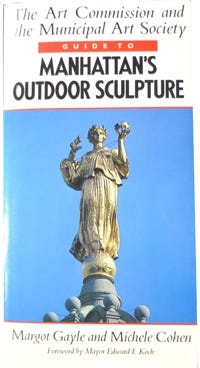
Since we’d be waking up in the Financial District, we decided to plan an excursion the morning after the party, before we headed home … something more cheerful than looking at the ruins of the WTC. Rummaging through my bookshelves before the party, I found Margot Gayle and Michelle Cohen’s The Art Commission and the Municipal Art Society Guide to Manhattan’s Outdoor Sculpture.
From the book, I chose four sculptures in the Financial District that appealed to me, either for their appearance or for the stories Gayle and Cohen told about them.
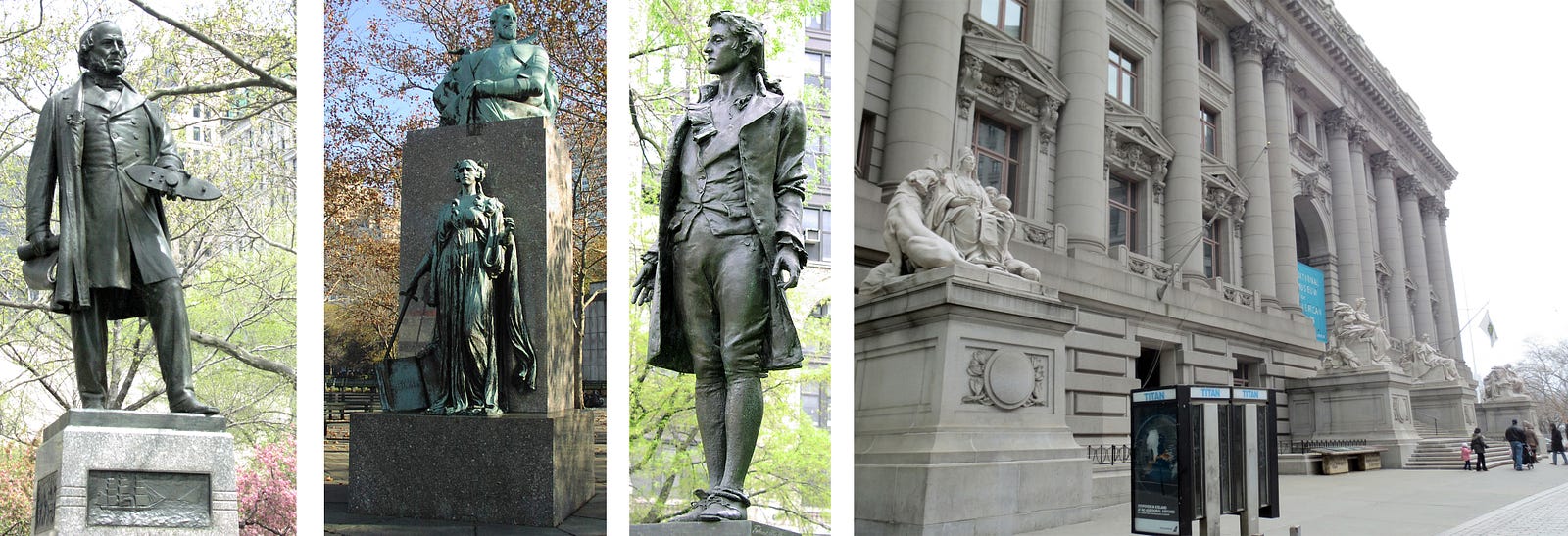
When I first saw the photo of Nathan Hale, the poem “Invictus” popped into my head. Since the blurbs in Gayle and Cohen are brief, I decided to make our visit longer by choosing a poem to read aloud at each of the sculptures.
That weekend — the Beard birthday party, the Ritz, and the sculpture / poetry excursion — is in the running for best weekend in my 30-plus years in New York. And there was an unexpected benefit.
Forgotten Delights
By 2002, I had been writing and lecturing on art history for years, and was eager to publish. However, few traditional publishers will take on art history books, especially when the author has neither fame nor an academic affiliation. As a businesswoman, I can’t blame them. High-quality color printing is exorbitantly expensive. Add to that fees to photographers for taking high-quality photos, and fees to artists for the right to show their work: it’s tough to make a profit printing art books.
While flipping through Gayle and Cohen, I realized that many of my favorite New York City sculptures were created before 1923, and hence in the public domain. That meant no fees were due to the long-dead artists. If I took the photos myself, I could avoid photographers’ fees. Most sculptures look fine in black and white. So I could actually afford to use an option that technological advances had recently made possible: self-publishing via printing on demand.
In 2002 I started a website that focuses on outdoor sculpture in New York. After an hour or so curled up with my favorite thesaurus, I dubbed it “Forgotten Delights,” because many of these works are wonderful pieces that New Yorkers and tourists rush past without a glance. In 2003, I self-published my first book, which was intended to be the first in a series: Forgotten Delights: The Producers.
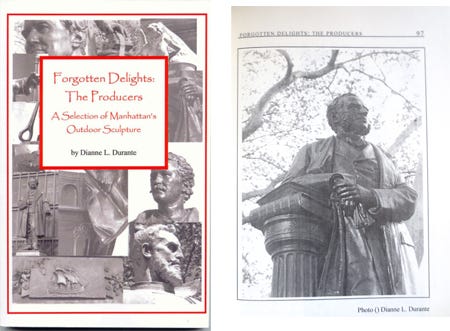
Alas, I wasn’t happy with the photos in this book. I could blame some of it on Lightning Source: in the early days, the quality of their paper and printing was pretty low. But I had to admit, too, that I wasn’t a very skillful photographer.
So I resolved to seek a collaborator who could take better photos. Next decision: low-end (college student majoring in photography) or top-notch? For a perfectionist, that was a no-brainer. I snail-mailed, phoned, and finally landed an appointment with David Finn. Aside from being co-founder of RuderFinn Public Relations, Mr. Finn takes fantastic photos, and he has hundreds of photos of New York sculpture in his files.
Mr. Finn proposed that we co-author a book: his photos, my text. The catch was that I’d have to raise $10,000 for printing expenses. To a freelance art historian, that seemed like a helluva lot of money. But perhaps I was being too frugal, thinking too small. How to find out?
In Barnes & Noble, I skimmed the acknowledgements of a dozen books on New York City history, art and architecture. Rita Rosenkranz, one of the agents who was thanked in two different books, agreed to talk to me about Mr. Finn’s proposal. (It was, incidentally, much easier to get the attention of a literary agent when I wanted to discuss a joint project with a well-known author than when I was pitching a book of my own. As a businesswoman, I can understand that, too.)
As it turned out, instead of merely advising me on the project with David Finn, Rita got me a contract with New York University Press to write a book on outdoor sculpture. It was published in 2007 as Outdoor Monuments of Manhattan: A Historical Guide.
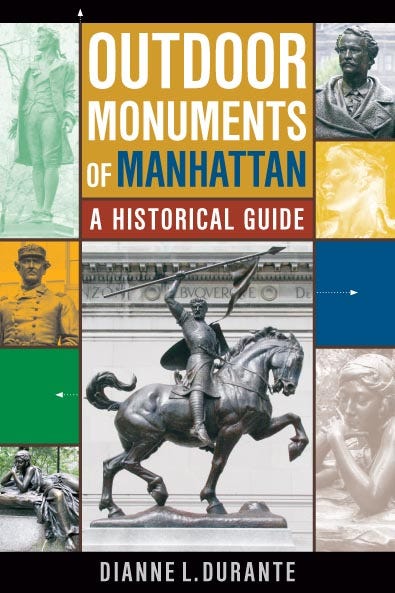
Outdoor Monuments of Manhattan
Outdoor Monuments includes 54 sculptures. (Click here to see the list.) Some are top-notch art, some have fascinating subjects, and some are icons of New York.
Nobody told me that first-time authors don’t dictate terms, so I insisted on an unusual structure for the book. Each essay begins with standard info: title, sculptor, date, medium, size, location, and (because smartphones with GPS were uncommon at the time) nearest subway stop.
Then there’s a sidebar: an excerpt related to the sculpture. I had a lot of fun picking those out. They include selections from the 19th-c. New York Times, from Aeschylus, Frédéric Auguste Bartholdi, and the musical version of The Scarlet Pimpernel.
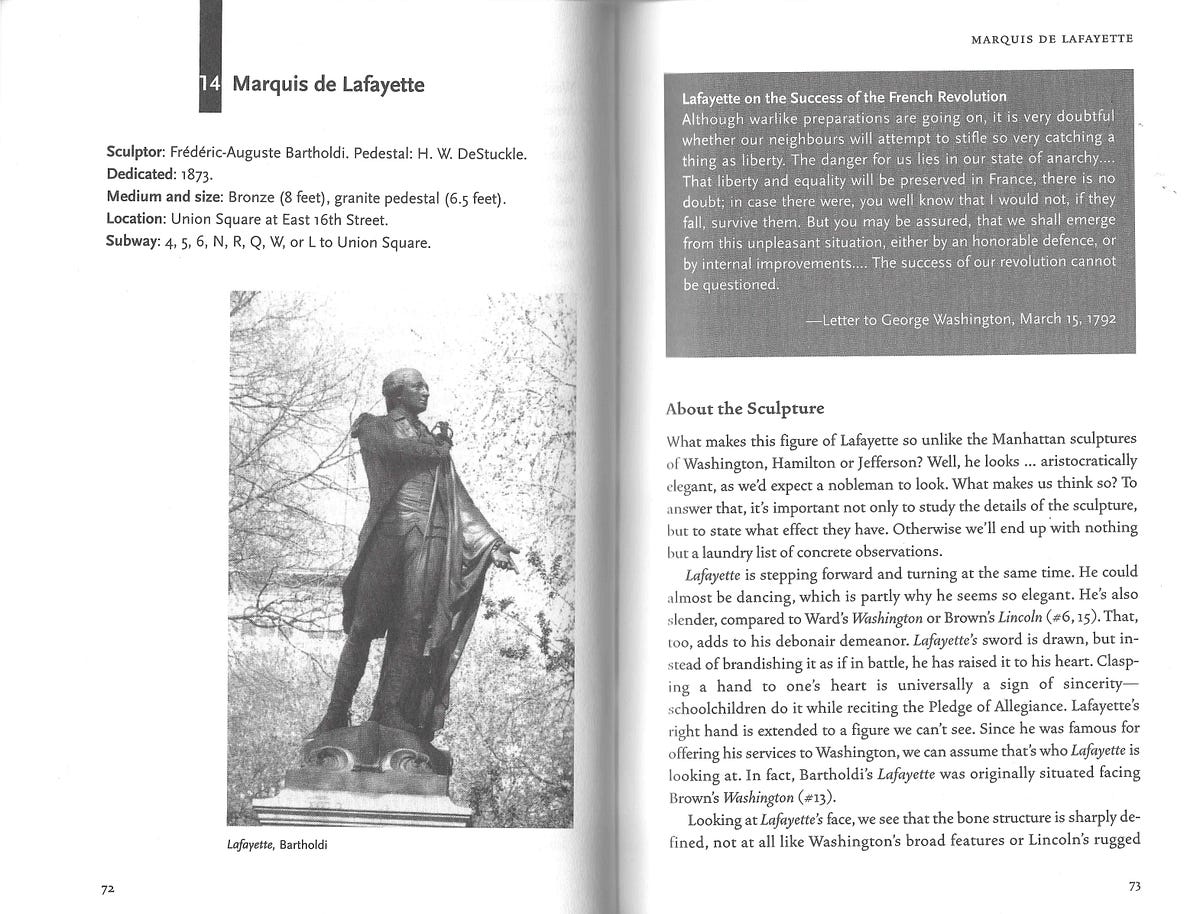
Next is “About the Sculpture.” That gives details about the piece as a work of art, but also talks about some broader questions. What are you reacting to when you react to a work of art? What’s the point of art? Can art be evaluated objectively?
That last question — Can art be evaluated objectively? — may have given you a clue that I write about art based on the philosophy of Ayn Rand. My editor at New York University Press wasn’t a fan. We had a few interesting conversations about this. …
Well, actually, we didn’t have conversations. He informed me of his point of view, and I informed him of mine, and neither of us budged. The editor sent the manuscript to an outside reviewer. The reviewer responded that my viewpoint was unusual, but not wrong. And so a book based on Ayn Rand’s esthetics was published by an adamantly leftist university press.
The last major section of each Outdoor Monuments essay is “About the Subject.” By 2005, when I was writing the book, Wikipedia offered capsule biographies of thousands of historical figures. So instead of giving a bio (as Gayle and Cohen did), I decided to focus on a particular episode or achievement in the life of the person represented. I wrote about General Sherman court-martialing a journalist. Journalists are civilians, right? But Sherman court-martialed one. It’s a fascinating story.
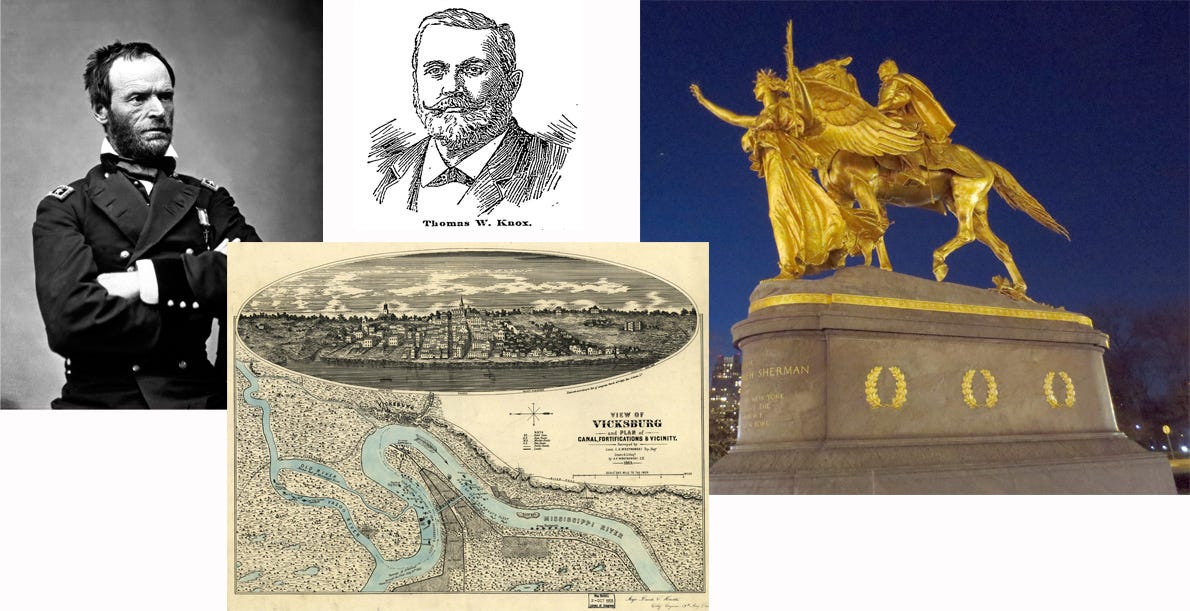
I wrote about Lincoln dealing with a vociferous Confederate sympathizer who’s mentioned in “The Man Without a Country.” I described Richard Morris Hunt designing a skyscraper, rather than the Beaux Arts palaces he’s famous for.

Outdoor Monuments was slated to come out in early 2007. One chilly January morning, Google alerted me to a review of the book by Sam Roberts in the Sunday New York Times. He called it “a perfect walking-tour accompaniment to help New Yorkers and visitors find, identify and better appreciate statues famous and obscure.”
My face hurt from grinning so much that day.
The next day, I discovered the book was not yet in stores, and wouldn’t be for several weeks. New York University Press is not-for-profit: coordinating with reviewers for maximum sales wasn’t a priority.
Ebooks
Fast-forward five years, to 2012. By then I had realized that being reviewed in the New York Times was not the same as being on the New York Timesbestseller list, and that Outdoor Monuments of Manhattan was not going to make me independently wealthy.
So I switched technologies, and started publishing Amazon Kindle books on Manhattan sculptures. I also published Kindle books on art history, including one on 19th-c. painting and one on Bernini. I love publishing on Kindle. It lets me include, without added expense, color images, lots of details and angles, comparative material, and archival photos.

I was so excited that I even wrote a Kindle book on how to write Kindle books! I’m a methodology geek, too: give me the chance to explain how to do a complicated task efficiently, and I’m almost as happy as writing about Polycleitus, Bernini, or Ugolino.

All my Kindle books are available via my Amazon author page.
Apps
Kindle books are a great medium for publishing on art history, but in 2011, I got the chance to work with an even more cutting-edge technology. An acquaintance who heard me lecture told me he was starting a company to produce guides for major cities. Each Guides Who Know videoguide would run as an app on phones and tablets, allowing you to find a landmark via GPS, then watch and listen to a story about it. He asked if there was any topic I’d like to do for New York. I said … Well, if you’ve read this far, you can guess, can’t you?
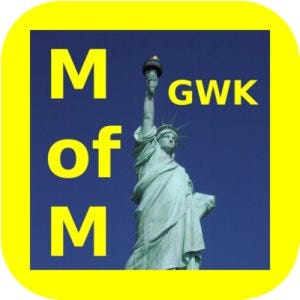
The original concept for the “Monuments of Manhattan” app was to have me read the text of Outdoor Monuments aloud while a video showed the sculpture from all different angles. We did a demo of Washington in Union Square that way. It was an epic fail. If you’ve ever written a script for movies, TV, or video, you won’t be surprised to hear that a work approved by an academic publisher didn’t translate well to audio and video. And if the point was to lead people to visit a sculpture, why did we need a whole video showing the work?
So the “Monuments of Manhattan” project evolved. I condensed and adapted the text, cutting the audio for each sculpture down to about four minutes: two for art, two for history. While I was doing that, I started thinking about images.
The sculpture of George Washington at Union Square represents him on November 11, 1783. With the treaties signed and sealed at the end of the Revolutionary War, the British were finally evacuating New York, and Washington was scheduled to ride from the boondocks (modern Union Square) down Broadway to Battery Park, where he would ceremonially reclaim the city for America. Giving the finger to the rebellious colonials , the British nailed their flag to the pole at Battery Park and greased the pole. (More on how that snafu was resolved here.)
If I could show a painting of Washington riding down Broadway, and show an American sailor pulling down the Union Jack as the British sail out of the harbor, and show the Roman sculpture that Washington was modeled on … why would I not do that?
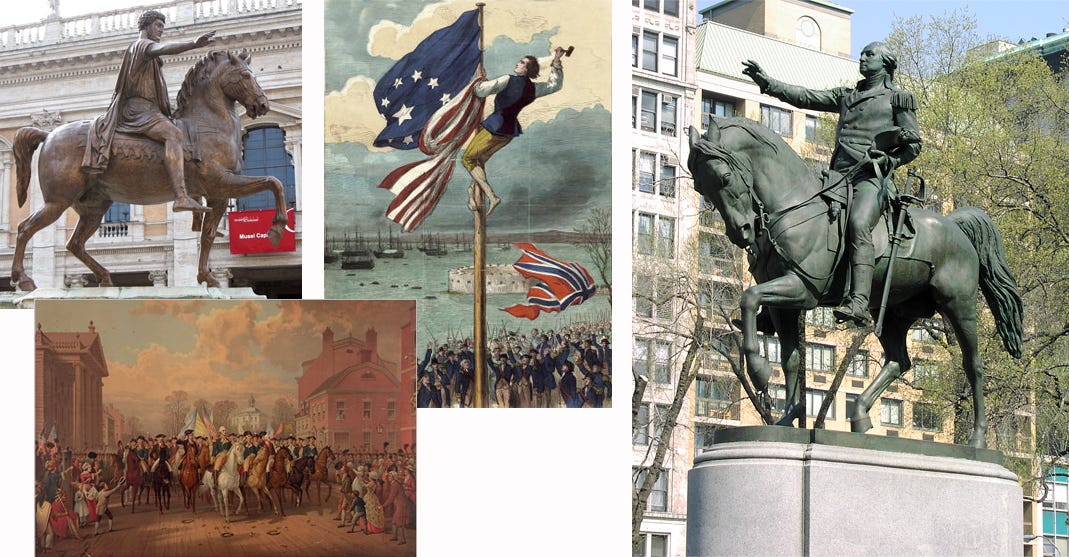
So I began researching maps, archival photos, drawings and engravings. Within the past ten years, masses of such material have been uploaded to the Net — a treasure trove, if you know the right places to look and the right terms to search. Fortunately, I’m a polyglot art historian who makes a living as a bibliographic researcher. I can find damn near anything.
The man who put the video together for the Guides Who Know apps is Richard Gleaves, whose talents are remarkable. He has composed several hours’ worth of videos and music to accompany John Galt’s speech from Atlas Shrugged. He has written the libretto for a Korean musical. He has published three modern-day Sleepy Hollow sequels that rank high in Amazon’s Suspense, Young Adult Horror, and Teen Gay Fiction categories.
Richard suggested adding original music to help set the mood for each episode of “Monuments of Manhattan.” I loved that idea. I’m not Oz the Great and Powerful — if you can’t see my face and hands, my delivery loses a lot. Richard composed orchestral pieces keyed to every sentence of every episode.
Besides that, when I couldn’t supply images, Richard did animations that made my jaw drop.

The tech guy for Guides Who Know is Adam Reed, who is extraordinarily knowledgeable about the science and psychology of interface design. He gave the app GPS that lets you sort the 54 sculptures either north to south, or based on how close they are to you. He also did wonders to make the size of the app manageable and the download speedy. The app has 3 hours of video, and it’s under 3GB. Don’t ask me how that was done. I just appreciate the results.
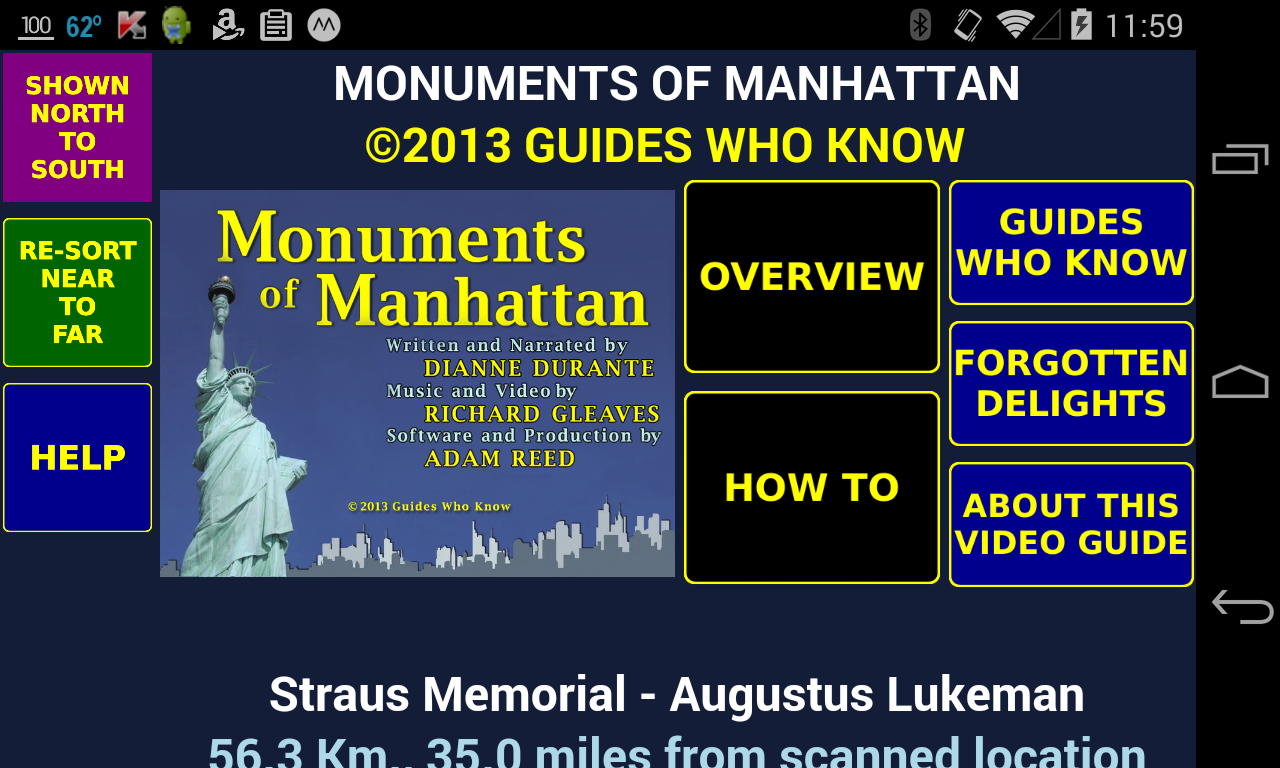
It’s been utterly fascinating to work on such cutting-edge technology. The Guides Who Know Monuments of Manhattan videoguide is available for Android users (free preview; complete app).
As of 2021, video and tech work on the Guides Who Know app with 75 features of Central Park is suspended indefinitely.
Print-on-demand books and Patreon
The quality of print-on-demand books has greatly improved since I published Forgotten Delights: The Producers in 2003. In 2017, I decided to offer my latest books in printed versions from Amazon’s CreateSpace, as well as ebook form. And rather than laying them out in Microsoft Word, I would use InDesign. In InDesign, it’s easier to control page endings and image placement, but designing a layout and formatting text is very time-consuming.
I decided that before spending months laying out books for print-on-demand, I would create a Patreon page to see if people were interested enough to pay a small sum monthly rather than merely purchasing the finished books. [NOTE: As of June 2019, I’m asking supporters to switch from Patreon to the Tip Jar on DianneDuranteWriter.com – details here.) Next question: what to promise as rewards? They have to be 1) something subscribers will want, and 2) something that won’t take much time or money to generate.
For more than a year, I’ve been sending members of my free email list three art-related recommendations per week. I decided to offer Patreon subscribers at the lowest level ($5/month) a fourth recommendation. Subscribers at the $10/month level receive a JPG of a sepia-toned sculpture with an appropriate quote. (I love doing those!) At $25/month, subscribers get my heartfelt thanks on the DianneDuranteWriter.com home page.
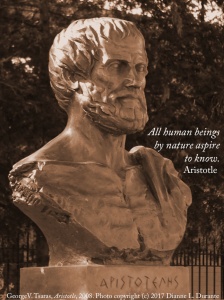
As goals on Patreon, I listed the next three books I want to work on, with amounts that would let me take time off my day job to finish them.
- Alexander Hamilton: A Friend to America, a compilation of more than 60 blog posts on Hamilton that stitch together an image of Hamilton’s life, times, and ideas via writings by Hamilton and others. In print, it runs to two volumes with more than 700 pages. The updated version of Alexander Hamilton: A Brief Biography includes cross-references to all the blog posts. [Set published December 2017: details here, including a 40% discount offer]
- Central Park: The Early Years, a 90-page description of the Park in the 1850s-1870s, profusely illustrated with archival images [published December 2017: details here]
- Innovators in Painting, which complements Innovators in Sculpture
In December, I expect to publish Central Park: The Early Years and the three Hamilton volumes. I’ll add links here when they’re available.
Meanwhile, I’ve offered members of the free email list and Patreon subscribers PDFs of Central Park: The Early Years. These are people who know my work: they’re an invaluable source of feedback and Amazon reviews.
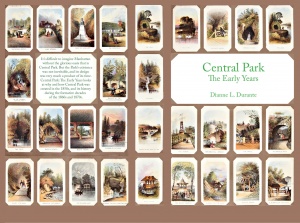
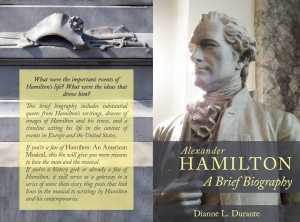
The next big technical issue: how do I get from the print version to a working ebook? InDesign’s Export feature to EPUB is glitchy. I may have to issue it as a fixed-layout PDF, which will be OK on tablets but not good on cellphones … Suggestions welcome.